Walking The Inca Trail
South America’s most iconic trek (3D/4N)

Every backpacker that we met in South America had visited Machu Picchu and about 90% of them saw it by hiking the Salkentay trek, the most popular alternative to the Inca Trail. For me, there was never any question about this. I was firm in my wish to walk the path of the Incas; a spiritual and ceremonial pilgrimage taken by the kings of the Quechua people to honour the revered mountains and valleys ending at the sacred Machu Picchu.
Booking
Due to the popularity of the Inca Trail, reservations have to be made five to six months in advance (the big advantage of the Salkentay is that you can just book the day before). After extensive research we chose to trek with Alpaca Expeditions due to their great reviews, being owned locally (the owner was first a porter then a tour guide) and their emphasis on supporting the Quechua community. It ended up being a great decision.
The night before the trek started we met the 12 others hiking in our group at a briefing in Cusco. It was a great opportunity to meet our guide, Daniel, and our assistant guide, Walter. We learned that the capacity of the Inca Trail on any one day is limited to 500 people; 200 walkers and 300 staff.
Day 1
We were collected at 4.30am from our accommodation in Cusco and drove two hours to our breakfast stop. Here we got a first look at our incredible team of 24 porters, otherwise known as the Green Machine, and the very slick operation they ran.

A further 20 minute drive to Km 82, our start point, and some time spent on admin and we were on our way.

After walking two hours on the flat we came to our first Inca site, Patallacta, a village of more than 100 dwellings that we admired from afar. During the break Daniel conducted a ceremony with coca leaves asking for the support of Pachamama on our journey.
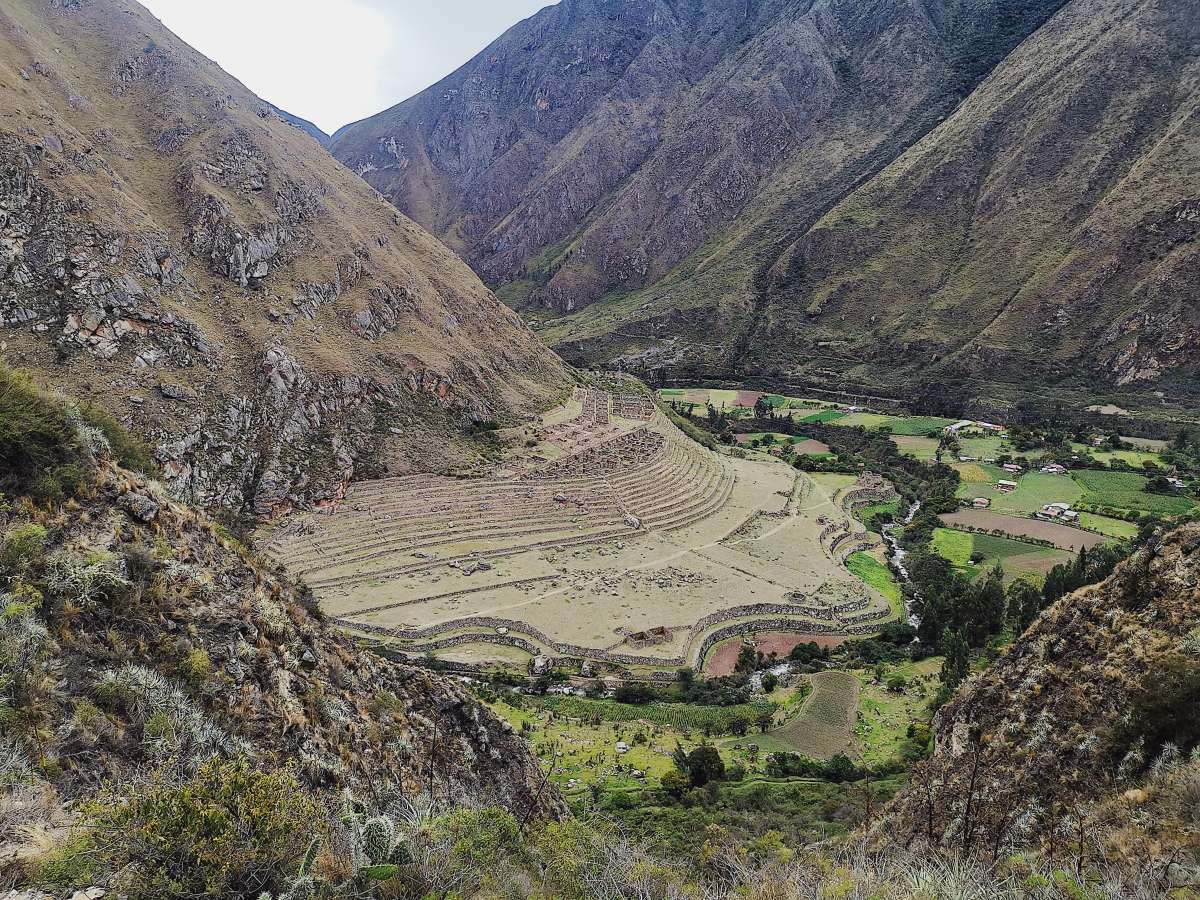 Patallacta
Patallacta
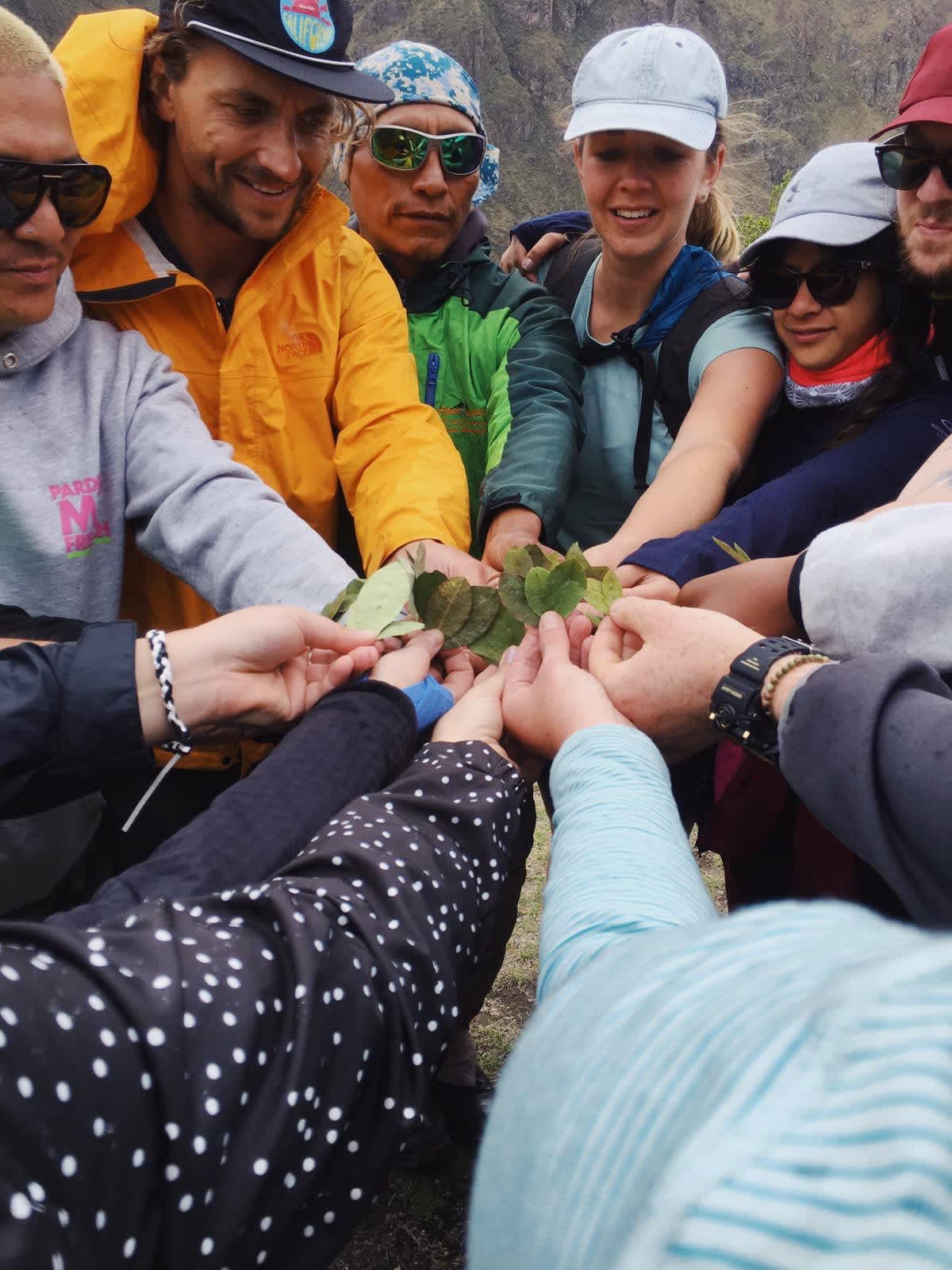 Photo credit: Casey Batts
Photo credit: Casey Batts
A further two hours and we were applauded into our lunch site by the porters who had a delicious meal waiting for us. As we rested after lunch the porters efficiently packed everything up and ran ahead of us with their enormous bags to repeat the process all over again for dinner.
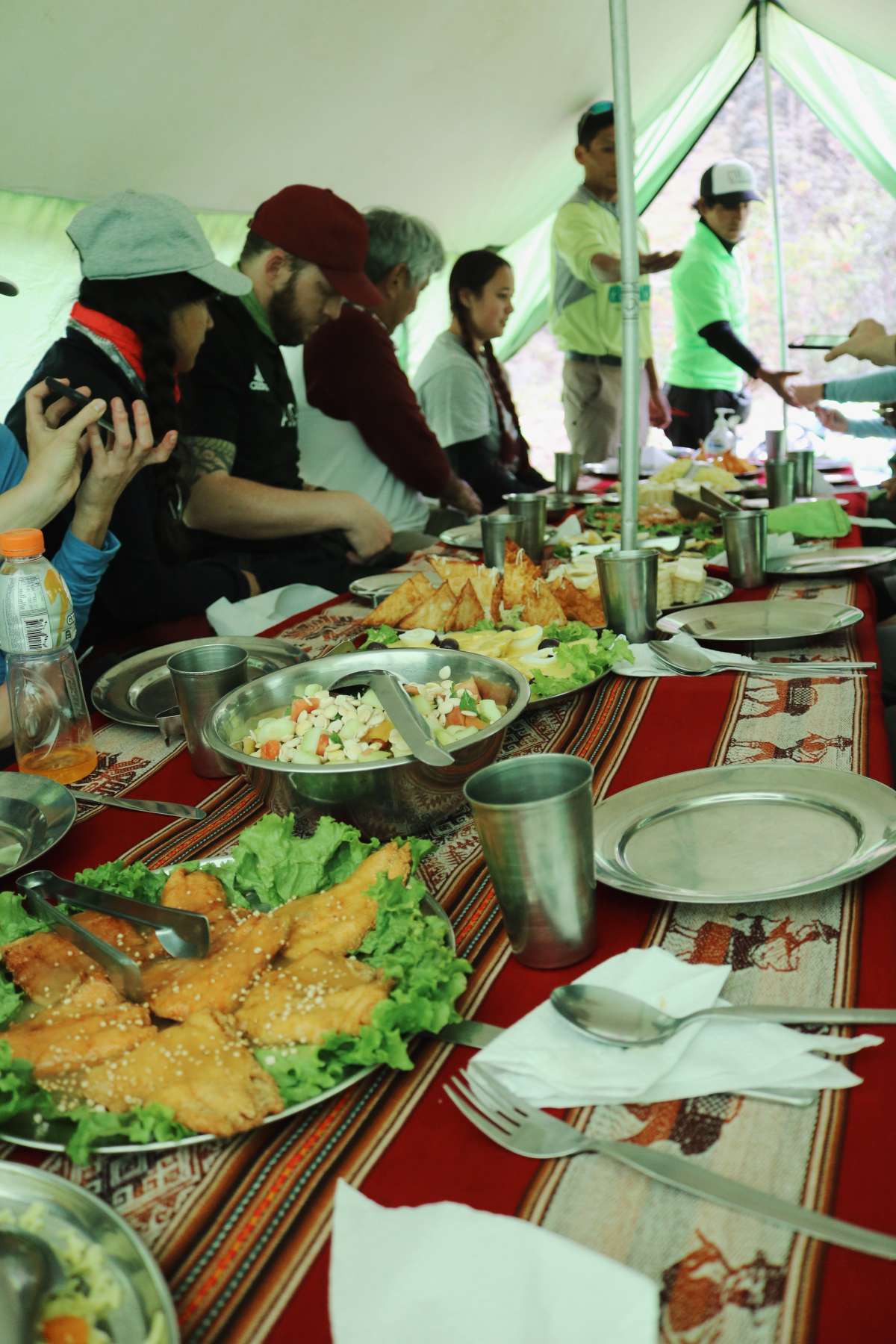 All of our meals were absolutely exceptional
All of our meals were absolutely exceptional
The terrain was pretty easy going; mostly flat with a decent uphill towards the end as we walked up to the campsite. We stopped every 20-30 minutes for mini breaks which was a bit disruptive but for the remaining three days we walked at our own pace which was great.
That night we met all our porters which was a pretty humbling experience. Speaking in Quechua, each porter introduced themselves, told us their age, job and how long they had been a porter. We had one female in our group and the ages ranged from 17-61! Conditions have improved a lot for porters over the past decade, with legislation being introduced to mandate the number of kilograms they carry but there’s no denying it’s still a pretty tough gig.
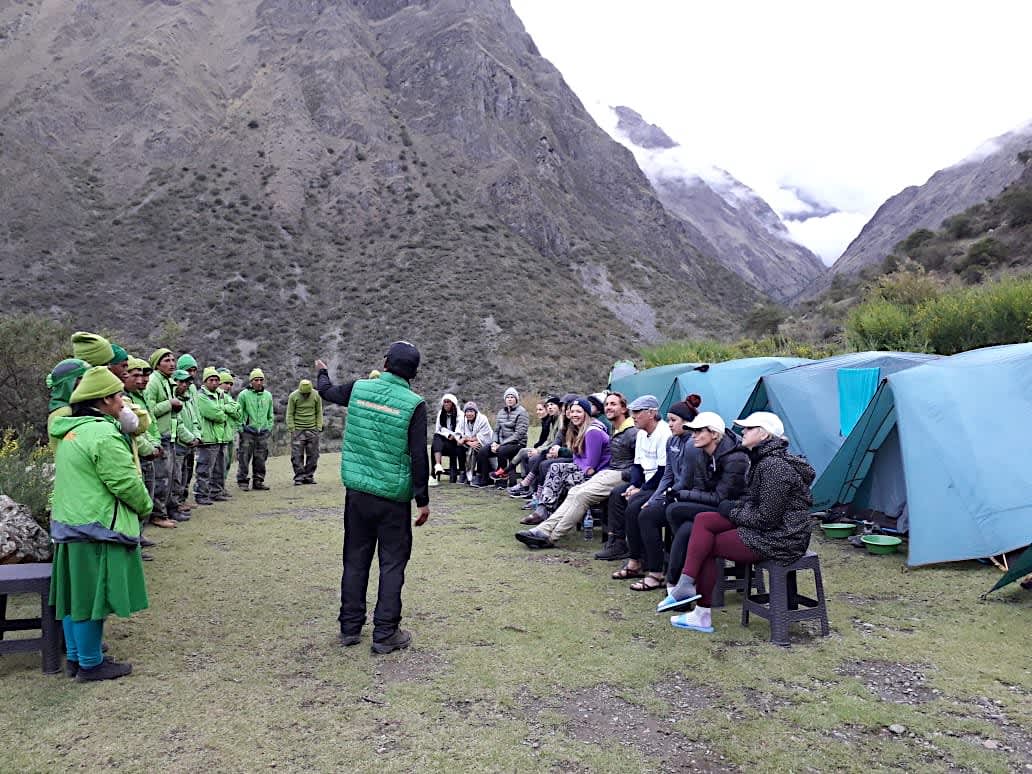 Meeting our incredible porters
Meeting our incredible porters
Day 2
This was the killer day and the only really challenging part of the whole trek.
We were woken very early by the guides and brought a steaming hot cup of tea in our tents. We had two very steep peaks to summit, the first of which, Dead Woman’s Pass, was the highest point of the trail at 4200m. It was difficult but we weren’t short of inspiration as the porters, carrying their huge loads, powered past us.

 Celebrating with our guide Daniel after everyone made it to the top of Dead Woman’s Pass
Celebrating with our guide Daniel after everyone made it to the top of Dead Woman’s Pass
We stopped at two Inca sites today, Runcu Raccay a small circular dwelling thought to have been a resting place for travellers, especially messengers, and the small village of Sayacmarca, literal name ‘inaccessible town’ due to there being only one narrow staircase leading up to it. While not much is known about Sayacmarca, we were shown where the sun temple once was and learned that there were many rooms here for food storage. As some of the finest architects in human history, we learned that the first thing the ancient Quechua people did when building a site was manage the process of establishing a water supply. This site in particular features an incredible canal system.
One of the most interesting things I learned on the whole trek was the debunking of a widely held belief that the people who lived in this ancient time were all called Incas. The word Inca in fact only refers to the King so there were actually only 14 Incas throughout history. The culture of the people then, as it is now, was Quechua. The same culture and language shared by our 26 staff.
Day 3
After yesterday, day three was pretty relaxing; a few easy hills at the start but mostly flat as we entered the jungle and then descended into the camp where we had lunch and dinner. No walking that afternoon!

The views along the entire trek were pretty exceptional, but day three is known to really deliver the goods. As the jungle opened and the fog cleared we got great views of the Urubamba River and the Vilcabamba mountain range including the formidable Salkentay standing at 6,271 metres.
 SO many stairs
SO many stairs
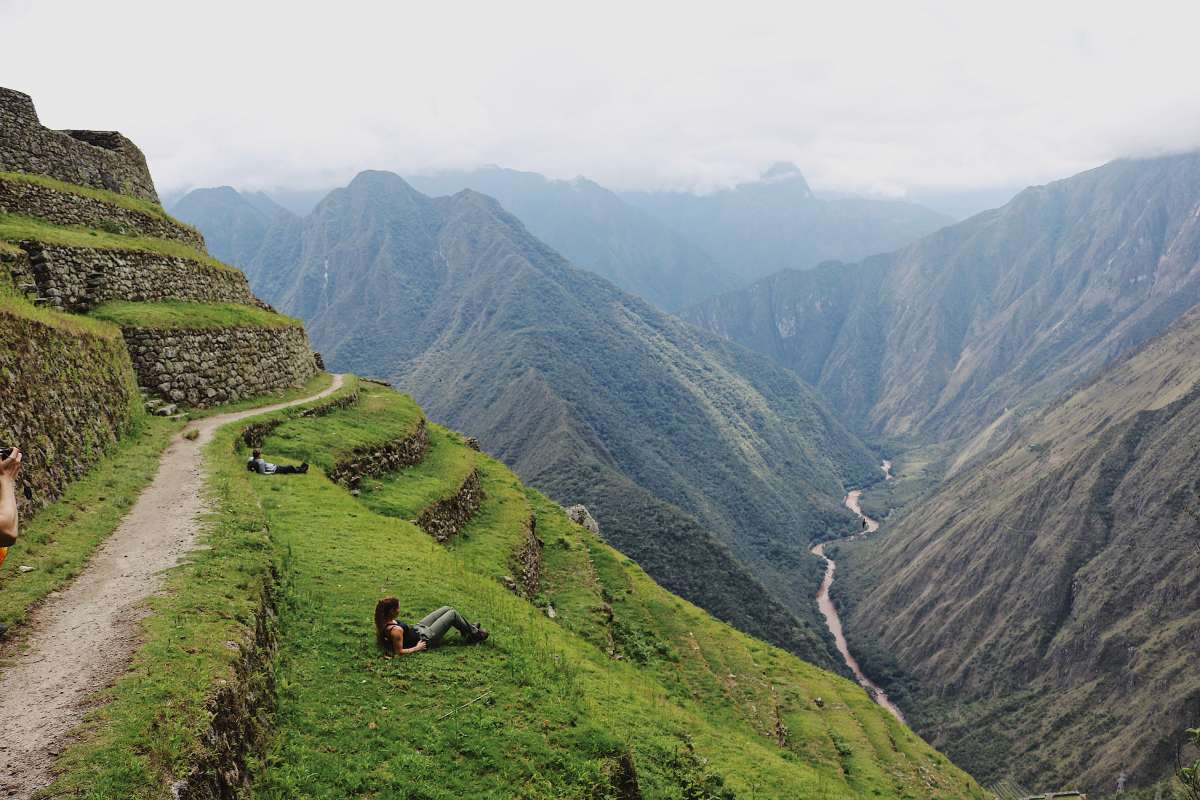 Relaxing at Intipata
Relaxing at Intipata
We visited three Inca sites: Phuyupatamarka – ‘the town in the clouds’, Intipata – ‘terraces of the sun’and the most spectacular site, Wiñay Wayna - a settlement carved into the side of the mountain featuring an upper and lower dwelling connected by more than 50 stepped terraces and a channel of water fountains. The scale of the place is awe-inspiring and it was pretty special to have an hour of our own time here which most of us spent sitting on a terrace looking out over the mountains contemplating our journey and those that came before us hundreds of years ago.
 Wiñay Wayna
Wiñay Wayna
Our chef made our last night that bit more special by producing a cake after dessert. This was our chance to really thank the porters for their incredible efforts and leave a tip if we wished.
 Our head chef Moises with his amazing creation
Our head chef Moises with his amazing creation
Day 4
The night before, our group expressed interest to be the first in line for the checkpoint to the Sun Gate. Our guides indulged us which meant an early start (3.30am) became even earlier – 2.50am our alarms went off! We were the second in line after a small group and we absolutely gunned it to reach the Sun Gate (there was running!) where, instead of the iconic view of Machu Picchu, we were greeted by a whole lot of fog and not much else! However it was worth it because from there it was only a short walk to Machu Picchu and arriving so early, we had the site almost to ourselves which was pretty special. Two hours later it was bumper to bumper with all the day trippers which definitely took the shine off such a sacred place.

Machu Picchu, a marvel of Incan era construction, is so beautifully intact because the Quechua people went to great ends to keep it hidden from the Spanish, such was the importance of the site. Widely thought to be built for one of the great Inca kings, Machu Picchu was not publicly “discovered” and brought into the public realm until an American explorer, Hiram Bingham did so in 1911.
After a two hour tour with Daniel and a celebratory beer in the nearby café we were on the bus to Aguas Calientes where we had a final celebratory lunch with our crew and guides and a very ‘merry’ train ride back to Cusco.
Experience: 11/10. One of the best things we did in South America.